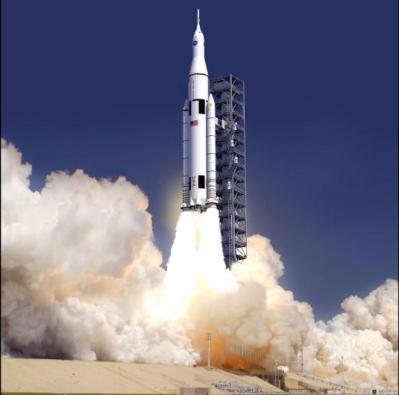After months of speculation, NASA has confirmed the final design of the Space Launch System (SLS), a heavy lift launch vehicle meant to launch NASA payloads into deep space by 2017. The first rockets will be capable of lifting 70 metric tonnes to low earth orbit (LEO), and later versions will be scaled up to 130t.
The first stage of SLS, as many anticipated, will be powered by five Rocketdyne RD-25D/E rockets, also known as space shuttle main engines (SSME), assisted in the first minutes of flight by two five-segment solid rocket boosters also derived from Shuttle systems. The second stage will be powered by the Rocketdyne J-2X, currently under development.
Bringing the launch system to first flight, scheduled for 2017, is expected to cost $18b. Additional details, including development cost of the 130t version, were immediately unavailable.
The announcement was made from the US Senate building in Washington, DC, indicative of SLS's strong congressional support. SLS has been the subject of bitter political battles between NASA and the senate, culminating in a senate subpoena for design documents and a series of angry letters.
 |
|---|
"We have been frustrated, I think that's no secret," said Senator Kay Bailey Hutchinson. "It came to a head that there was a leak that issued a hypothetical set of circumstances which would double the cost of this space launch systemand that's when senator Nelson and I came forward saying, 'this is sabotage.'"
SLS is the most recent iteration of a series of large planned launch vehicles that have been cancelled and resurrected in various forms, notably the Ares V launch vehicle, to which SLS bears an uncanny resemblance.
 |
|---|
Source: Flight International



















